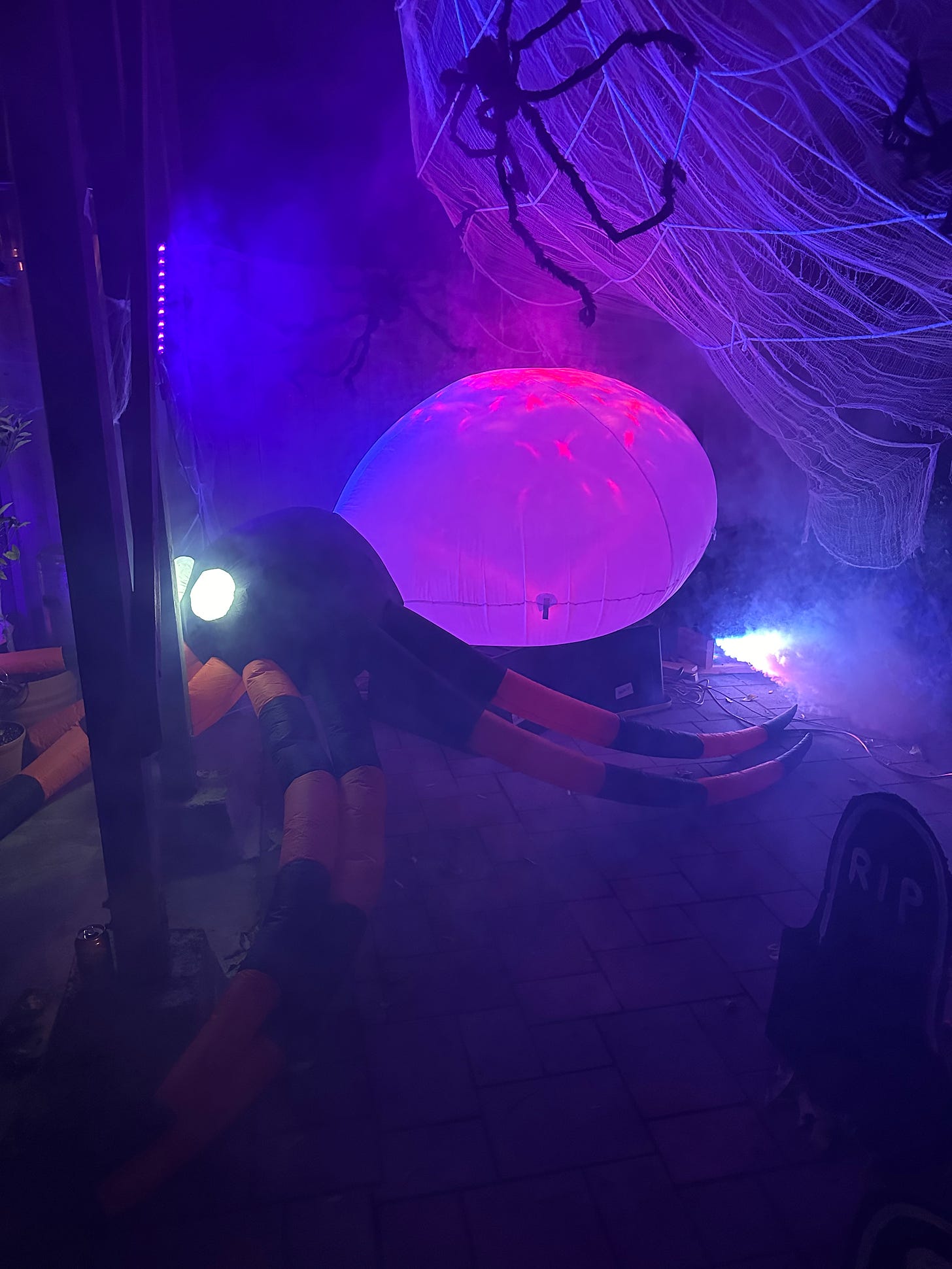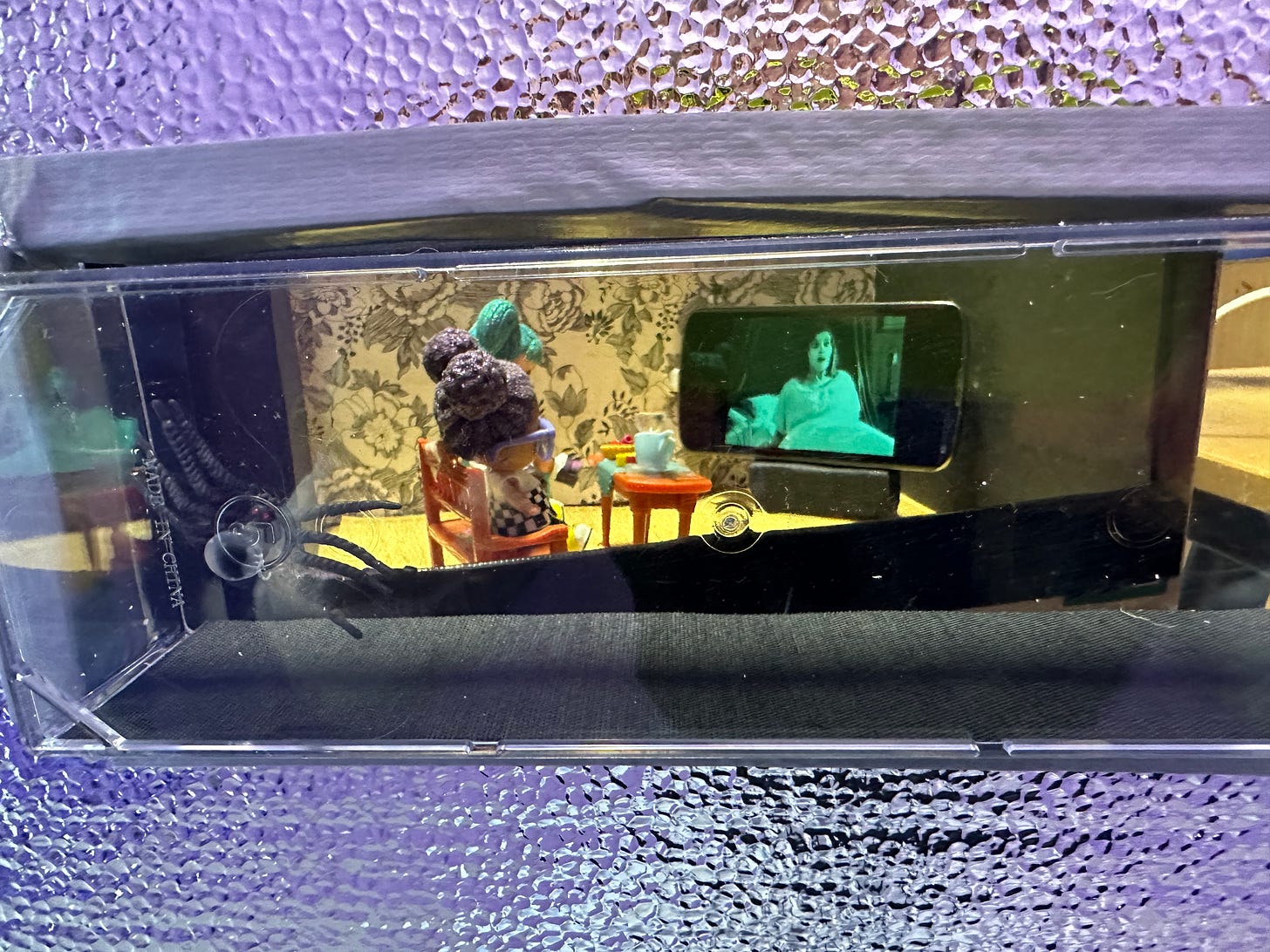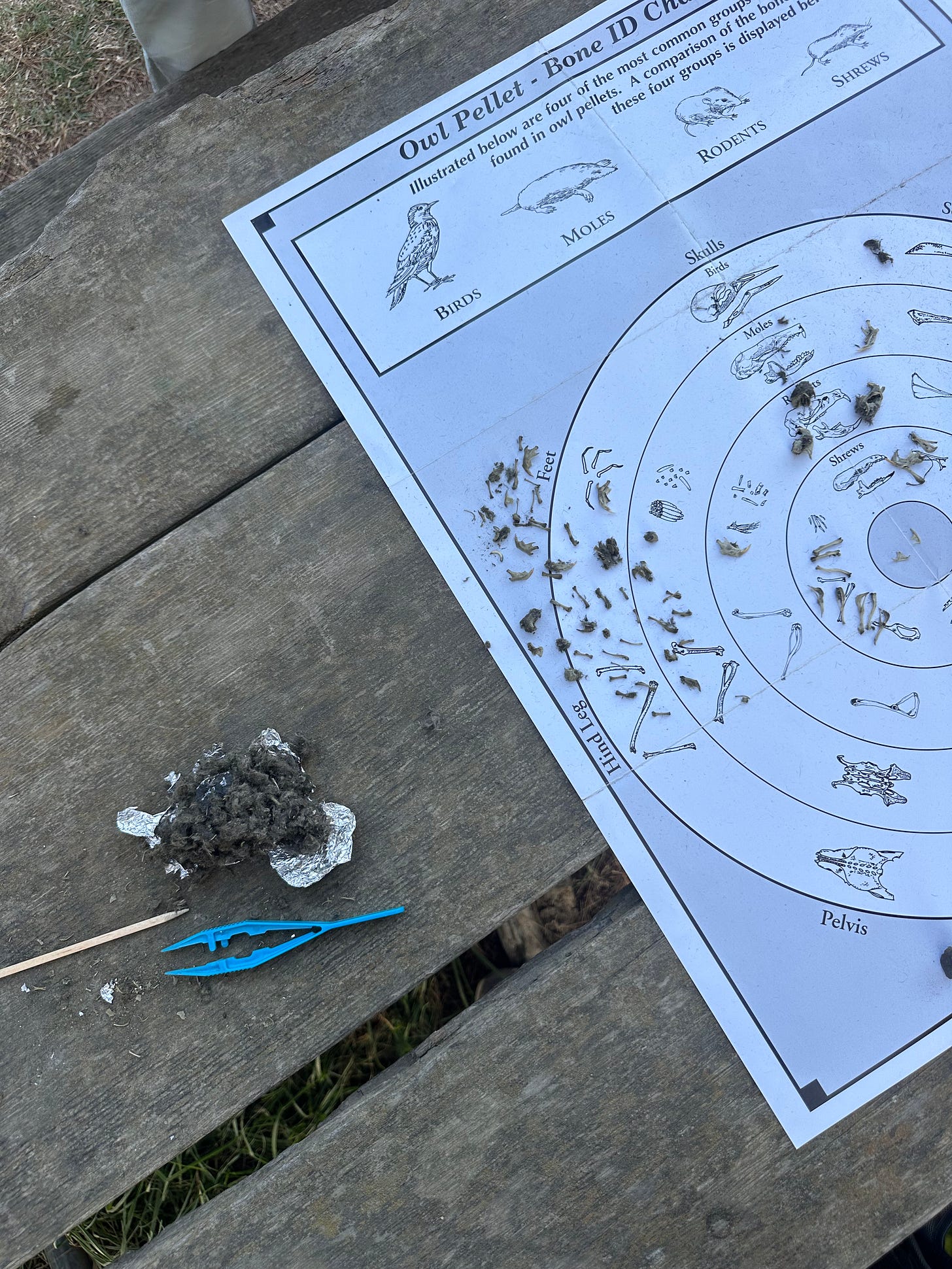Halloween without candy?
What I talk about when I talk about not handing out Halloween candy, a new study into early sugar intake, the plastic bag loophole and decoding the songs of birds.
Hello Technically Food readers. Thank you for being here. Special shout out to my newest subscribers including Tanja, Ruby, Ariadna and Melissa.
Last night, I dove deep into one of San Francisco’s busier neighborhoods for Halloween. No, not the Castro, but Glen Park. Friends hosted their 2nd annual haunted house and I had to see it. It wasn’t a house, but a one-car garage fashioned into a curiosity room. A silver and purple corridor of tiny peep show dioramas, pin hole views of digital eyeballs, an infinity mirror and other surprises. As the skies darkened, the line to enter the garage lengthened. Visitors stepped out into a backyard full of spiders, cobwebs, smoke and creepy doll pictures with red shimmering eyes. Everyone exclaimed, many went bag for another look. And I was there to see it unfold, accepting the compliments when my friends were out wandering with their kids. In my hands I held a silver bowl full of…stickers.
“Happy Halloween,” I said. “Here’s a sticker.” Most of the kids took it in. I suggested they put it on a notebook. One parent high-fived me. Most kids approved although there were a few shocked faces when I said, “No candy. Stickers.” I also enjoyed calling out “4 out of 5 dentists approve of this treat.” It was my kind of Halloween celebration and I’ll go back next year to hand out another bowl of…stickers.
This brings me to a new study about sugar. Researchers looked at people born during a WWII sugar ration in England and found that limits on sugar conferred lifelong health benefits to babies conceived at the same time. Other than when US supermarkets were emptied in the early days of Covid, most of us probably don’t get that we’ve at times had to limit our consumption of specific foods. Other countries did the same. In the UK during WWII many common foods were restricted like sweets and candies. Adults got about 40g of sugar per day and children over two were limited to less than 15g.
Researchers looked at about 55,000 people — in rationed and un-rationed times. Those born “before or just after the end of sugar rationing were 35 percent less likely to develop type 2 diabetes, 30 percent less likely to become obese, and 20 percent less likely to develop hypertension during their lifetimes than their un-rationed peers, per the study. If those in the rationed group did develop diabetes or hypertension, they tended to do so years later in life.”
Nutrition studies often don’t come out with black and white results but the authors gave a hypothesis that “sugar exposure early on predisposes someone to a lifetime of higher sugar consumption.” This includes babies in utero — so what Mom eats — and after they’re born. Did you know that most infant formula is sweetened to match the carbohydrates found in mothers milk? My favorite quote in the Popular Science article is this: “We should also think about holding companies accountable,” adds Gračner.
Rarely do we discuss holding Big Food companies accountable for how their products have altered human health negatively. Now this is a tangent, but stick with me. I have owls in my neighborhood. I love to hear them hoot at night and I often wonder what they’re saying to each other out in the trees. Owls eat mice, vowls, birds, snakes, rabbits, insects, you name it. When they eat they hold the animal in their gullet and slowly digest it. Eventually, they spit out a pellet made of bones and fur. I got to dissect one. It’s awesomely cool.
What if owl diets had been altered to ours? One of cheap, empty calories? Calories from a factory, pre-blitzed animal protein fashioned into mice-shaped puffs coated in savory natural flavors? This seems shocking, right? It sounds absurd but it’s what’s happening to humans. We need markets stocked with food, but we ought to re-think what’s actually available on the shelves or make more things denigrated like cigarettes.
Moving on.
Last week, I attended the HNGRY summit in Los Angeles. I lead a panel on alternative proteins – think tofu, plant-based deli meats and vegan poached eggs. Some key moments include Kimberlie Le, the co-founder of Prime Roots, telling the audience that new brands (and legacy brands like Quorn, which is partnering with Prime Roots, need to have “the four P’s – product, price, placement and promotion.” Hard to get for newcomers and hard to hang onto for legacy brands like Quorn.
From Eric Schultze, former regulatory VP of Upside Foods, which earned a green light for commercial sales under his lead, I learned that the many meat trade associations form one super group called the “Barnyard.” He elaborated for the audience: “They're arguably the largest lobbying group ever created in the history of humanity. And they're the most well financed lobbying group that's ever existed.”
All this to say that if you wonder why tofu is still in the corner, or plant-based sales are still less than one percent of animal meat, this is why.
Next week, will be a paid newsletter and in December, I will be weighing in on trends for 2025. Consider upgrading to paid so you can read them. Also, my archives are only available to paid subscribers, an invaluable resource. Last note: Please leave me a comment or tap the heart button above to show me you like me, you really like me.
I’m just here for the tidbits:
Remember my essay for Sierra Magazine about getting plastic out of the kitchen? In it, I told you to ditch any of your black plastic cooking utensils because they are found to have fire retardants. Here’s The Atlantic weighing in on the very same topic.
The Grist writes about a plastic bag loophole thanks to California’s bag ban, which allowed markets to continue pumping un-recyclable bags into our world. Also, a plug for Ridwell, which helps you send all kinds of yucky plastic to a better fate than landfill.
In time for next weeks big election (anyone else nervous?), read this Eater piece on food on the campaign trail.
What I’m reading:
A story in the New Yorker by Rivka Galchen about the scientists decoding birdsong. There’s no mention from those researching owls, but when I looked up “why do owls hoot” a few years back, I found the explanation — they’re talking to other owls or alerting other owls to danger — too simplistic. The owls in my neighborhood are a chatty bunch and I’m certain there’s more to their chatter.







My parrot eats pellets -- the equivalent of a nutritionally complete premium dog kibble, I reckon. Of course he gets (and even occasionally deigns to eat) fresh fruits and veggies, but even parrot experts advise a pellet diet. That is terribly sad, but we can't meet his needs otherwise, so it's another example of how awful it is to keep exotic animals as captive pets.
Speaking of birds, a parrot flock calls to each other so they know where everybody is when they aren't in view of each other. They're prey, unlike owls who are predators, so keeping tabs on each other is important to survival. Still, it's possible your owls are just yelling "hey, where you at? I'm over here," "I'm over here, where are you?" "I'm still over here, you still over there?" all night long.